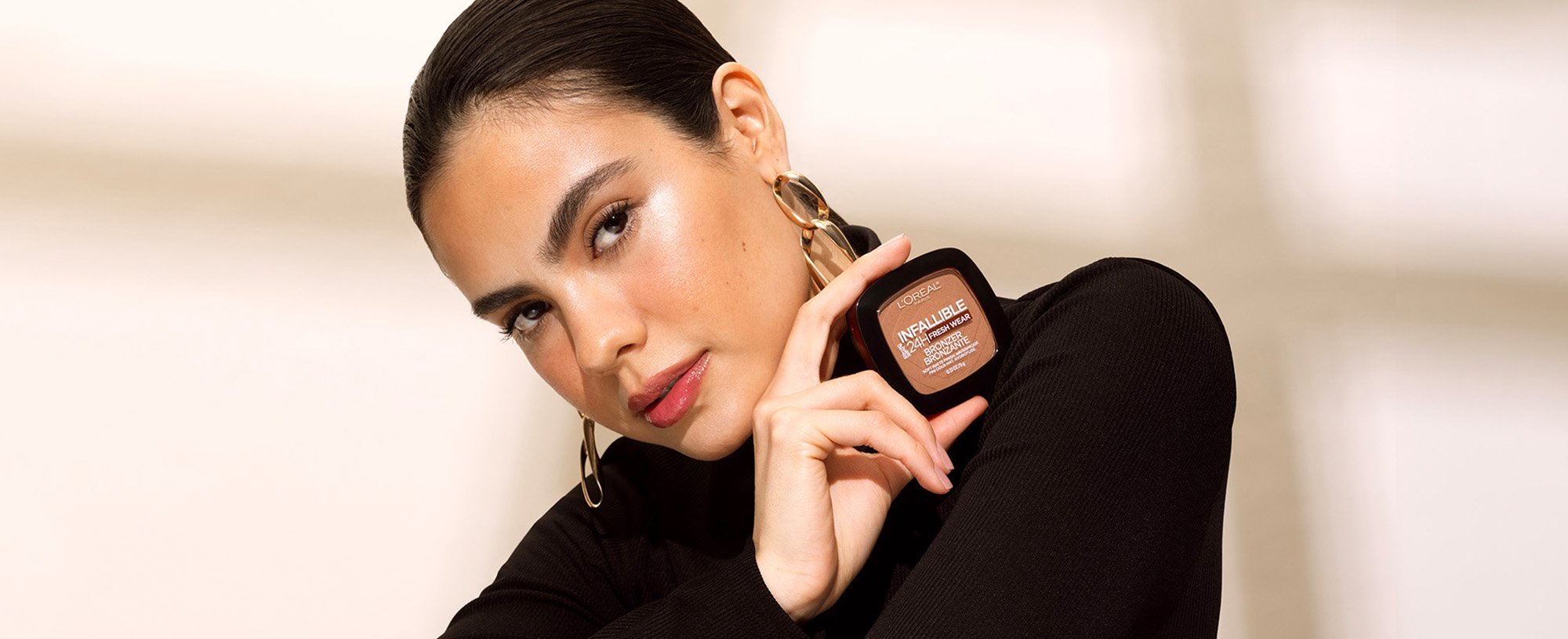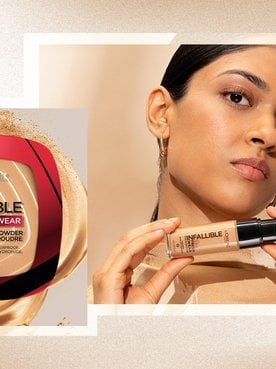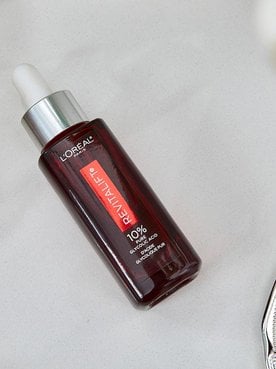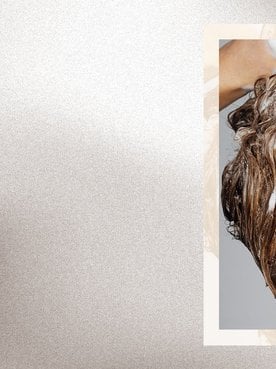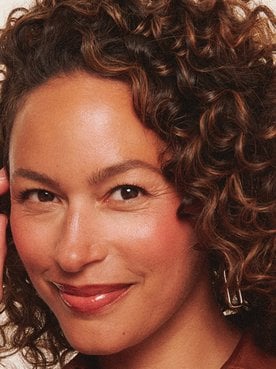If you’ve ever been confused about the difference between bronzer vs contour, you’re not alone. While both products are used to shape and define the face, they serve distinct purposes and create different effects. Whether you're building a natural everyday glow or aiming for a sculpted, editorial finish, understanding the difference between bronzer and contour can transform your makeup game. Let’s break it all down so you can decide which is right for your routine.
The Difference Between Bronzer and Contour
Though they often look similar in the pan, thedifference between bronzer and contour comes down to tone, placement, and intention. Bronzer is typically warm-toned and meant to add a sun-kissed warmth to the skin. Contour, on the other hand, uses cool or neutral tones to create shadows and define features.
What does bronzer do?
Bronzer is designed to mimic the look of sun exposure. It can warm up a complexion that looks too flat after foundation, or add a radiant touch to no-makeup days. For a super-easy, on-the-go application, try the L'Oréal Paris Lumi Le Glass Highlighter Stick. You’ll need only one swipe for a glassy, multi-dimensional glow.

What does contour do?
Contour is about shadows; it’s used to visually sculpt the face and enhance your natural bone structure. You can use specific contour powders, cream contour sticks, or even deeper shades of concealer or foundation. Two products to try are great for this purpose: the L'Oréal Paris Infallible 32HR Fresh Wear Foundation, which is a buildable, breathable, and lightweight formula, and the L’Oréal Paris Infallible Skin Ink 2-in-1 Foundation Concealer for a precise, long-lasting definition that blends seamlessly with your skin.
Should You Use Bronzer, Contour—or Both?
Bronzer vs. contour shouldn’t be a whole debate. Using both gives the most multidimensional results. Start by using contour to sculpt your bone structure, then add bronzer to bring back warmth. This combo is especially useful after foundation, which can sometimes even out the face too much.
Which goes first: bronzer or contour?
When it comes to sculpting your face, start with contour first—right after applying your base makeup but before adding any color products. This step helps define and shape your features, laying the groundwork for a more lifted and dimensional look. If you're still wondering what is contour makeup or what does contour do, think of it as a way to create shadows that enhance your natural bone structure—like slimming your jawline or sharpening your cheekbones.
After contouring, it’s time to bring warmth back into the skin with bronzer and contour used together. Place it in the hollows of your cheeks, along the sides of your nose, your jawline, and the perimeter of your forehead. In contrast, place bronzer slightly above those areas—where the sun would naturally hit your face. This is the key difference between bronzer and contour: contour adds definition, while bronzer adds warmth. For a flawless blend, apply bronzer just above your contour lines and soften any harsh edges to create a smooth transition.
Can You Use Bronzer as Contour?
It’s possible to use bronzer as contour, but it depends on the product and the look you're going for. Warm-toned bronzers can blur rather than define features, which may work for softer looks. However, for visible definition, products in cool tones will deliver cleaner results.
Who Should Use Bronzer?
Bronzer suits everyone, it’s just a matter of choosing the right formula and shade. If your skin tone looks flat or pale post-foundation, a bronzer will help restore dimension and radiance. For oily or acne-prone skin, stick to matte formulas like the L'Oréal Paris Infallible Up To 24H Fresh Wear Soft Matte Bronzer. If you’re going for a dewy, glowing finish, opt for liquid or cream formulas like the L'Oréal Paris True Match Lumi Glotion Natural Glow Enhancer blended with your fingers or a damp sponge.

Choosing the Right Shade for Your Skin Tone
Finding the right shade of bronzer and contour is key to a natural-looking finish. To create seamless definition and warmth, your product shades should work with your skin tone and undertone, not just match your foundation. If your shades are off, the results won't be great, so it’s worth taking the time to get it right.
Warm vs. cool tone
Bronzer should lean warm to mimic a summery effect, while contour should be neutral or cool to replicate shadows. If you're warm-toned, golden bronzers tend to be more flattering. If you’re cool-toned, lean into ashy or taupe contours that mimic real shadows without adding too much warmth. If you're cool-toned, choose bronzers with peach or beige undertones, and keep contour tones ashy or taupe for realism.

Undertone matching
Always match bronzer and contour to your undertone, whether it's warm, cool, or neutral. This helps ensure the tones blend naturally into your skin rather than standing out or looking too stark. A cool-toned contour on warm skin, for example, can sometimes read as too gray, while a warm bronzer on cool-toned skin might appear a bit orange. Getting the match right really makes a difference.
Subtle contour vs. bold sculpting
If you prefer a more natural look, opt for a subtle contour with a lightweight cream formula like the L'Oréal Paris True Match Radiant Serum Concealer, infused with hyaluronic acid and providing medium coverage. For dramatic sculpting, reach for a more pigmented, matte contour like L'Oréal Paris Infallible Full Wear Concealer Up To 24H Full Coverage and layer it with precision. Bronzer can be built up to match either style, but contour is where the drama lies. Precision tools make all the difference here.
Where to Put Bronzer and Contour
Proper placement can completely change how bronzer and contour look on your face. Their roles may be different, but their power lies in strategic application. Here’s where each should go for maximum effect.
Bronzer
Apply bronzer to the high points of the face: temples, outer forehead, cheeks, and bridge of the nose. Think of the spots that naturally catch the sun. Use a fluffy brush to diffuse the product seamlessly into your base.
Contour
Contour in the hollows of your cheeks, under the jawline, sides of the nose, and around the hairline. Shadow enhances bone structure and creates contrast in these areas. A tapered brush or contour sponge helps keep the placement sharp and defined.
How To Apply Bronzer vs. Contour
Even if you understand where they go, mastering how to apply bronzer and how to contour takes practice. Let’s break it into steps so you can feel confident doing either (or both).
How to contour
Contour usually goes first, over your foundation. Use a cool-toned cream or powder and a dense brush or sponge. Blend carefully, focusing on shadow placement. Remember: the goal is structure, not color.
Step 1. Sculpt the cheekbones
Apply contour just below the cheekbone in a diagonal line from the ear toward the mouth. Stop about halfway for a lifted effect. Blend upward to soften the shadow.
Step 2. Sharpen the jawline
Run contour along the underside of your jaw, starting near the ears. Blend down into the neck for a seamless transition. This gives the jawline more definition.
Step 3. Slim the nose
Use a small brush to apply contour on both sides of the nose bridge. Blend carefully to avoid harsh lines. You can also contour underneath the tip for a more defined look.
Step 4. Plump the lips
Lightly contour below your bottom lip for a fuller appearance. This subtle trick enhances lip shape without makeup on the lips themselves. It works well under gloss or balm.
Step 5. Highlight for contrast
Use a highlighter or a brighter shade of foundation or concealer to add light to high points: cheekbones, nose bridge, and brow bones. This contrast makes the contour stand out more.
Step 6. Setting powder or spray
Set your finished look with translucent powder or a setting spray like the L'Oréal Paris Infallible 3-Second Setting Mist. This locks in your makeup, ensuring long-lasting definition throughout the day.
How to apply bronzer
For bronzer, you’ll need a fluffy brush for a natural blend and build. Look for soft, flexible bristles that let you layer gradually. Think warmth, not streaks.
Step 1. Warm up the cheekbones
Sweep bronzer just above the hollow of your cheekbones, not in it. This keeps your face looking lifted and sun-kissed. Blend upward for a soft finish.
Step 2. Bronze the forehead
Apply bronzer along the hairline and temples. This adds warmth and balances the face. It’s especially useful for those with larger foreheads or uneven tans.
Step 3. Define the jawline and neck
Lightly brush bronzer along the jawline and extend slightly down the neck. This helps avoid a mask-like foundation line. Blend thoroughly so the color melts into your skin.
Step 4. Add a sun-kissed touch
Dust a bit of bronzer over the bridge of the nose and chin. This creates a fresh, beachy vibe. You can even add a bit to the collarbones or shoulders for continuity.
Step 5. Lock in the look
Set your bronzer with a light mist or powder to prevent fading, like the L'Oréal Paris Infallible Blur-Fection Longwear Loose Setting Powder This helps keep your glow fresh throughout the day and prevents your bronzer from settling into fine lines or disappearing by midday.
Next Up: What Is a Foundation-Concealer Hybrid and How Do You Use It?
Photo courtesy of L’Oréal Paris
Photo credit: IG/@irasemaleyvadistribuidora
